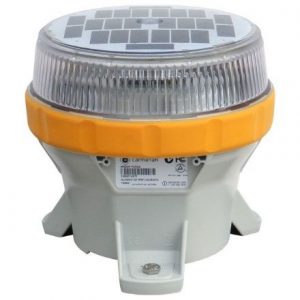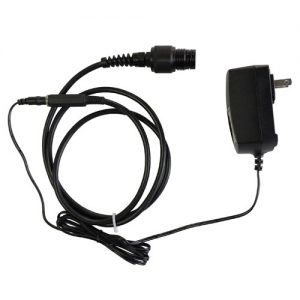Data Buoy Storage Requirements
The following buoy storage requirements are required when storing a CB-Series data buoy with an X2-CB data logger:
Storage Requirements
- Store the buoy in a dry environment that is kept above freezing. A climate-controlled location may be necessary.
- Extremely cold temperatures can negatively impact the performance of the batteries.
- Cold or excessively fluctuating storage temperatures can weaken the PVC joints of the deployment pipes.
- Ensure the vent is clear of all obstructions.
- If the vent is clogged, high-pressure combustible gas can build up within the data well due to outgassing from the batteries.
- If planning to remove the plate from the data well, DO NOT use power tools.
- Disconnect the 6-pin solar panel plug from the buoy’s SOLAR port as soon as the buoy is removed from service.
- The solar panel cable plug has an internal jumper that acts as a switch to supply onboard electronics with power.
- If the solar panel cable is left connected during storage, the batteries inside the data well will die and require replacement.
- The solar panel cable plug has an internal jumper that acts as a switch to supply onboard electronics with power.
- Power OFF any LED beacons that are affixed to the buoy solar tower.
- The included IR beacon remote can be used to accomplish this according to the commands listed in the M550 or M650H Quick Start Guides.
- If a remote is not available, remove the beacon and place it outdoors where it can receive consistent sun to maintain charge.
- Check the voltage of the SLA batteries in the buoy data well monthly and ensure they remain above 12V. Follow the link below for proper guidance.
Preparing for Re-Deployment
- Top off the charge of the buoy batteries every 2-3 months by:
- Connecting a NexSens CB-Series Battery Float Charger Kit*
- Reconnecting the solar panel and moving the buoy outdoors into the sun.*
*While charging, the data logger will be running. It is recommended that:
-
-
- All sensors be disconnected from the buoy.
- The X2-CB transmit interval and sensor log intervals are reduced to minimize telemetry data usage and power consumption.
-
- Protect all cable and port connections.
- Inspect all sensor ports and cable connections ensuring all O-rings are present and there are no signs of moisture or damage.
- Cover all logger or cable receptacle ports with a UW-plug to keep moisture out.
- Keep all system cable O-rings and connectors clean by covering them with the included red (8-pin) or yellow (6-pin) polymer caps.
- If these caps are no longer accessible, any means of shielding the connectors from debris that does not damage the O-rings is acceptable.
- Use the O-ring grease included in the maintenance kit as needed to re-grease the cable/plug connector O-rings.



